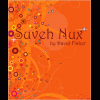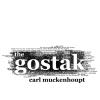Pieces of Games
Recommendations by Ron Newcomb (Seattle)Sometimes the best way to understand a type of puzzle or interaction is a pithy, stand-alone example of it.
Add a comment
1. Accuse, by David A. Wheeler (2007)
Average member rating:  (17 ratings)
(17 ratings)
Ron Newcomb says:
The board game Clue focuses on a logic puzzle of elimination. Try this three-room, three-person, three-weapon example.
2. Robopuppy Redux, by J.D. Clemens (2007)
Average member rating:  (2 ratings)
(2 ratings)
Ron Newcomb says:
Old dogs can learn new tricks, and so can old authors thanks to the source code of this trainable NPC.
3. The Knapsack Problem, by Leonard Richardson (2001)
Average member rating:  (7 ratings)
(7 ratings)
Ron Newcomb says:
Given the weights, sizes, and worth of many oddball treasures, how much stuff can fit in a particular knapsack?
4. Logic Puzzle Sampler, by Andrew Plotkin (2003)
Average member rating:  (5 ratings)
(5 ratings)
Ron Newcomb says:
Occupying a hazy area between language puzzle and pure logic, it explores contradictory statements of paradox. Or not.
 5. Aisle
5. Aisle
by Sam Barlow
(1999)
Average member rating:  (320 ratings)
(320 ratings)
Ron Newcomb says:
Many games of old feature the learn-by-dying trope. Taken to an extreme, the result is a one-move game regardless whether you die or not.
6. Puzzle, by Andrew Schepler (1998)
Average member rating:  (1 rating)
(1 rating)
Ron Newcomb says:
A tower, a pulley, some rope, a boy, a dog, yourself, a rock, and gravity. Related to the Knapsack Problem is the question of balancing weight.
7. In the Spotlight, by John Byrd (1998)
Average member rating:  (6 ratings)
(6 ratings)
Ron Newcomb says:
Physics-based puzzles naturally combine logic with the real world. This one is a faithful adaptation of an actual scientific experiment used on primates -- including humans.
8. The Zuni Doll, by Jesse Burneko (1997)
Average member rating:  (6 ratings)
(6 ratings)
Ron Newcomb says:
There are two major approaches to combat in i-f. One is statistical, as in Dungeons and Dragons. The other is the Zuni Doll: guess-the-right-action, or else.
 9. Suveh Nux
9. Suveh Nux
by David Fisher
(2007)
Average member rating:  (225 ratings)
(225 ratings)
Ron Newcomb says:
Language-based puzzles range from the bizarre, fourth-wall breaking T-removing machine of LGOP (which necessarily turns a rabbit into a rabbi), to elegant, language-learning puzzles as in the magical grammar of Suveh Nux.
 10. The Gostak
10. The Gostak
by Carl Muckenhoupt
(2001)
Average member rating:  (87 ratings)
(87 ratings)
Ron Newcomb says:
A language-based puzzle in which the work itself is in the foreign language, The Gostak is an acclaimed decoding puzzle.
View this member's profile
See all lists by this member
Create your own Recommended List
 (17 ratings)
(17 ratings) (2 ratings)
(2 ratings) (7 ratings)
(7 ratings) (5 ratings)
(5 ratings)5. Aisle
 (320 ratings)
(320 ratings) (1 rating)
(1 rating) (6 ratings)
(6 ratings) (6 ratings)
(6 ratings)9. Suveh Nux
 (225 ratings)
(225 ratings)10. The Gostak
 (87 ratings)
(87 ratings)